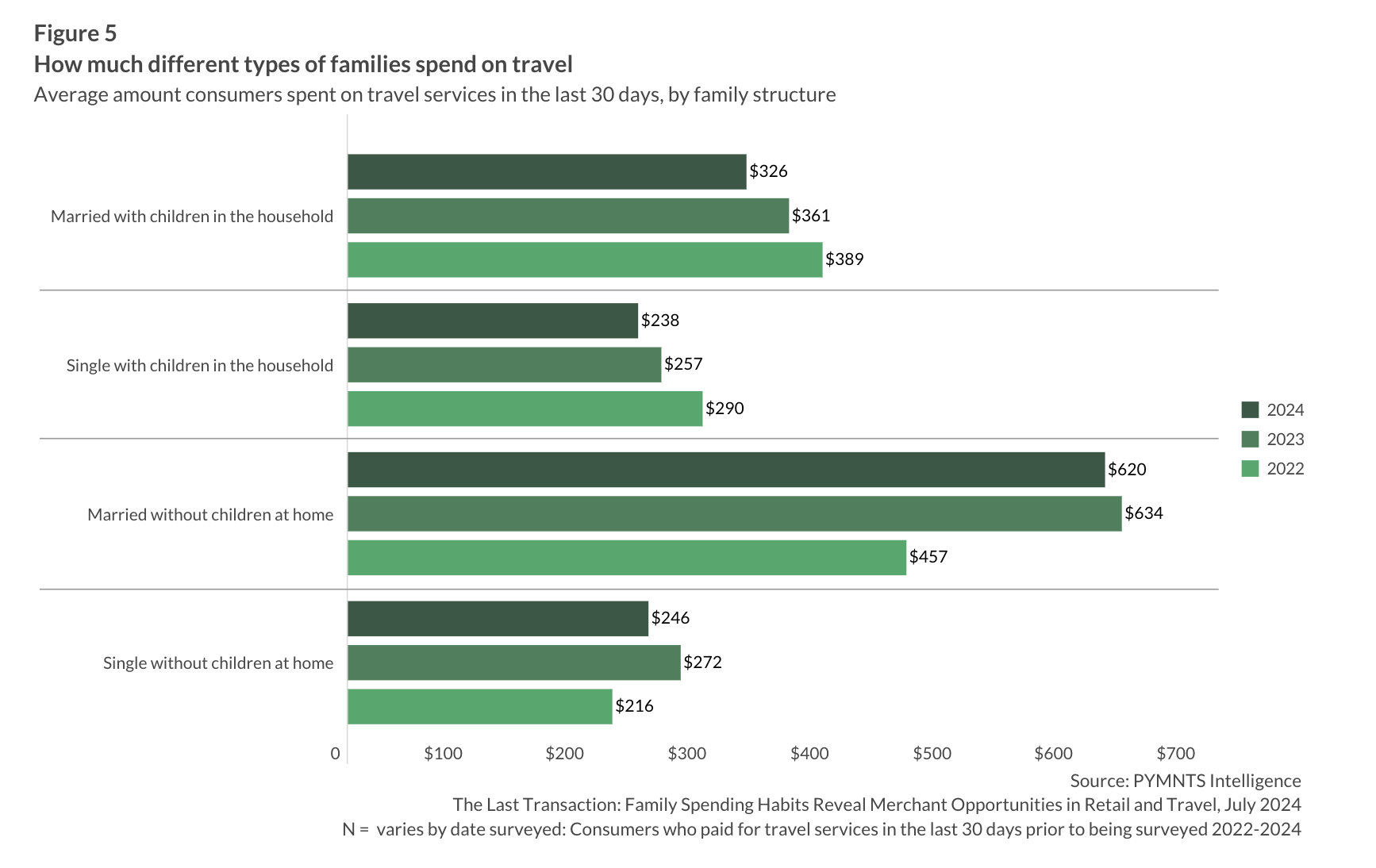Families May Travel More Often, but Spend Less Than Couples Without Kids
Married couples without children are leading the way in travel spending, data show, and as others pull back their purchasing in the category, these dual-income-no-kids consumers continue to shell out. “The Last Transaction: Family Spending Habits Reveal Merchant Opportunities in Retail and Travel,” a PYMNTS Intelligence report, leverages data from a survey of over 2,700 […]
The post Families May Travel More Often, but Spend Less Than Couples Without Kids appeared first on PYMNTS.com.
Married couples without children are leading the way in travel spending, data show, and as others pull back their purchasing in the category, these dual-income-no-kids consumers continue to shell out.
“The Last Transaction: Family Spending Habits Reveal Merchant Opportunities in Retail and Travel,” a PYMNTS Intelligence report, leverages data from a survey of over 2,700 U.S. consumers to analyze how retail and travel spending behaviors differ across various household types.
The results reveal that those who are married without children at home are spending the most on travel, and that spending has been the most resilient in the recent past. When surveyed this year, they said they had spent $620, on average, on travel services in the last month, down slightly from $634 last year but up considerably from $457 in 2022.
These figures were well above their single counterparts, who spent $246, $272 and $216, respectively. That is, for this year, single consumers without children at home are spending 60% less than their married counterparts.
Meanwhile, married consumers with children at home may not have the disposable income of their childless peers, having spent $326 on travel in the previous 30 days when surveyed this year, down from $361 in 2023 and $389 in 2022.
Single consumers with children at home spend the least on travel, perhaps because of the financial constraints that come with taking care of a family on just one income. They averaged $238, $257 and $290 in 2024, 2023 and 2022, respectively.

The Data in Context
Indeed, travel companies are feeling some of this pullback. On Thursday (July 25), American Airlines reported that, in spite of record second-quarter (Q2) revenue of $14.3 billion, net income nonetheless plummeted 46% to $717 million.
“Our current revenue performance is not where we want it to be,” CEO Robert Isom said. “We know we can do better, and we will rise to meet this challenge.”
Similarly, American Express shared on a call discussing its earnings released July 19 that, while travel and entertainment (T&E) spending rose 7%, there were areas of weakness.
“We did see some slower growth in certain T&E categories versus the prior quarter, such as in airline and lodging,” CFO Christophe Le Caillec said. “At the same time, growth in our largest T&E category restaurants remained strong.”
The post Families May Travel More Often, but Spend Less Than Couples Without Kids appeared first on PYMNTS.com.
